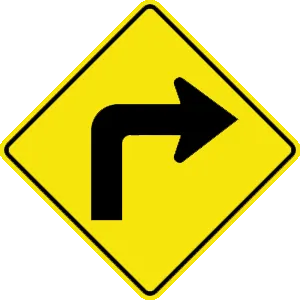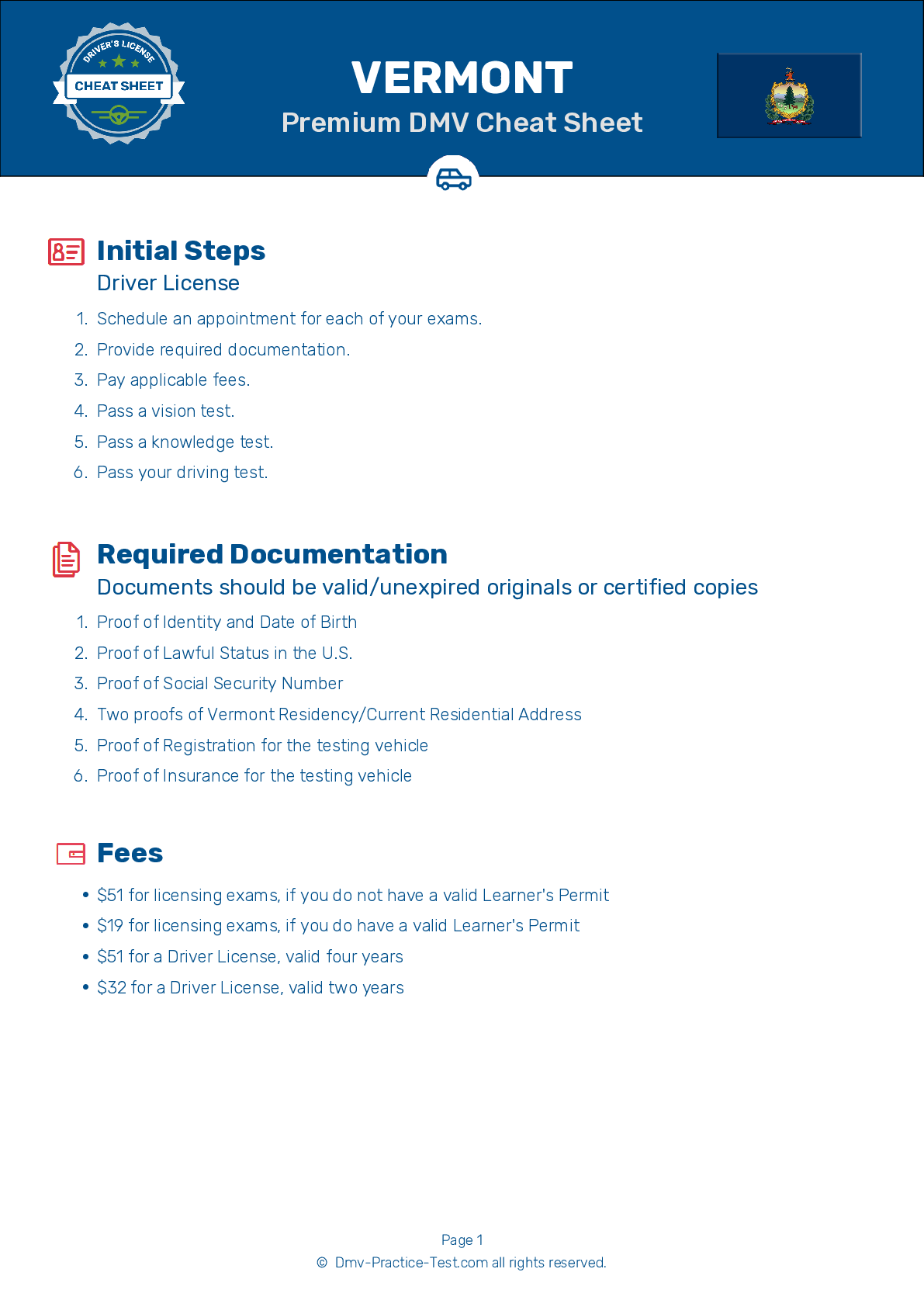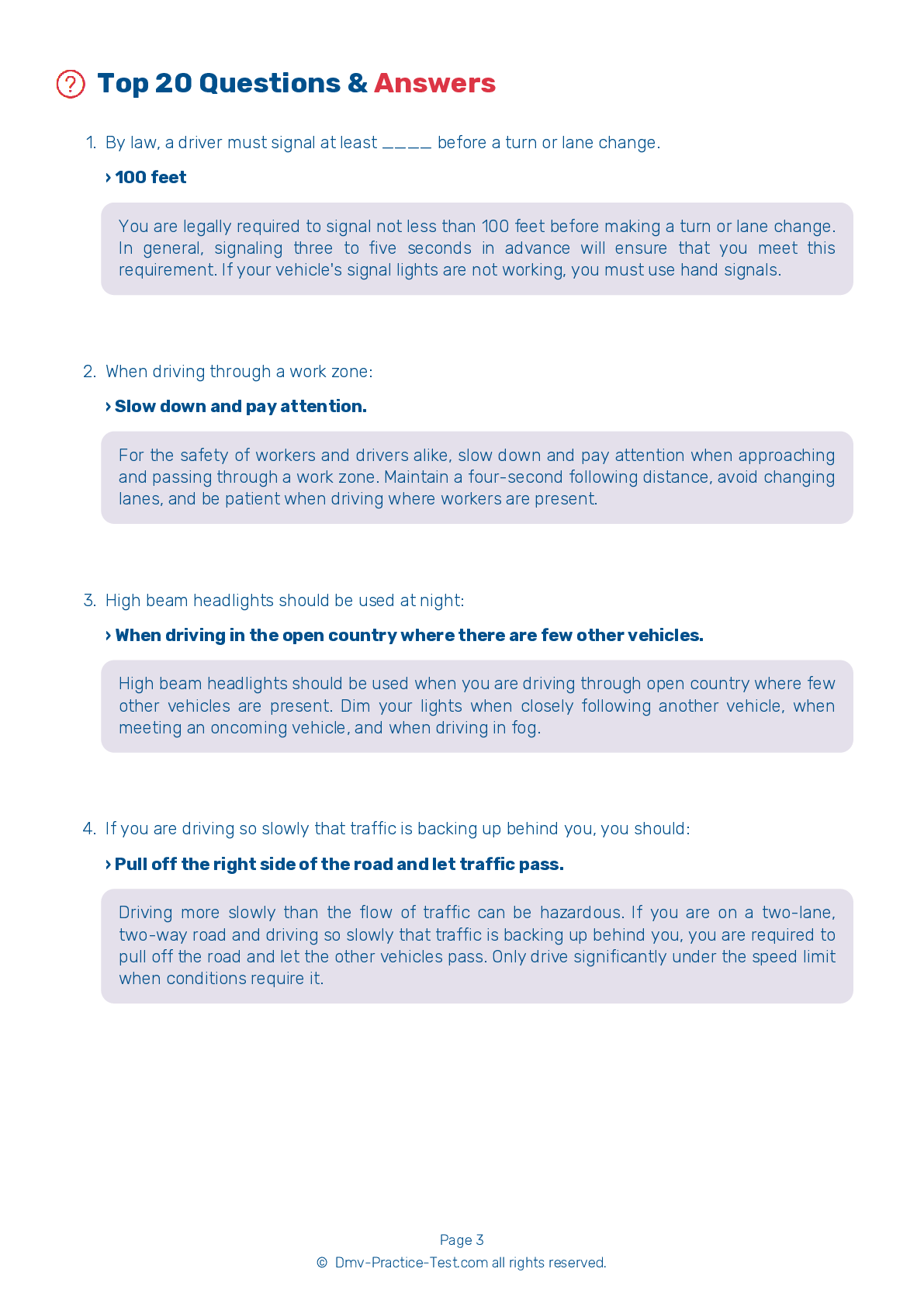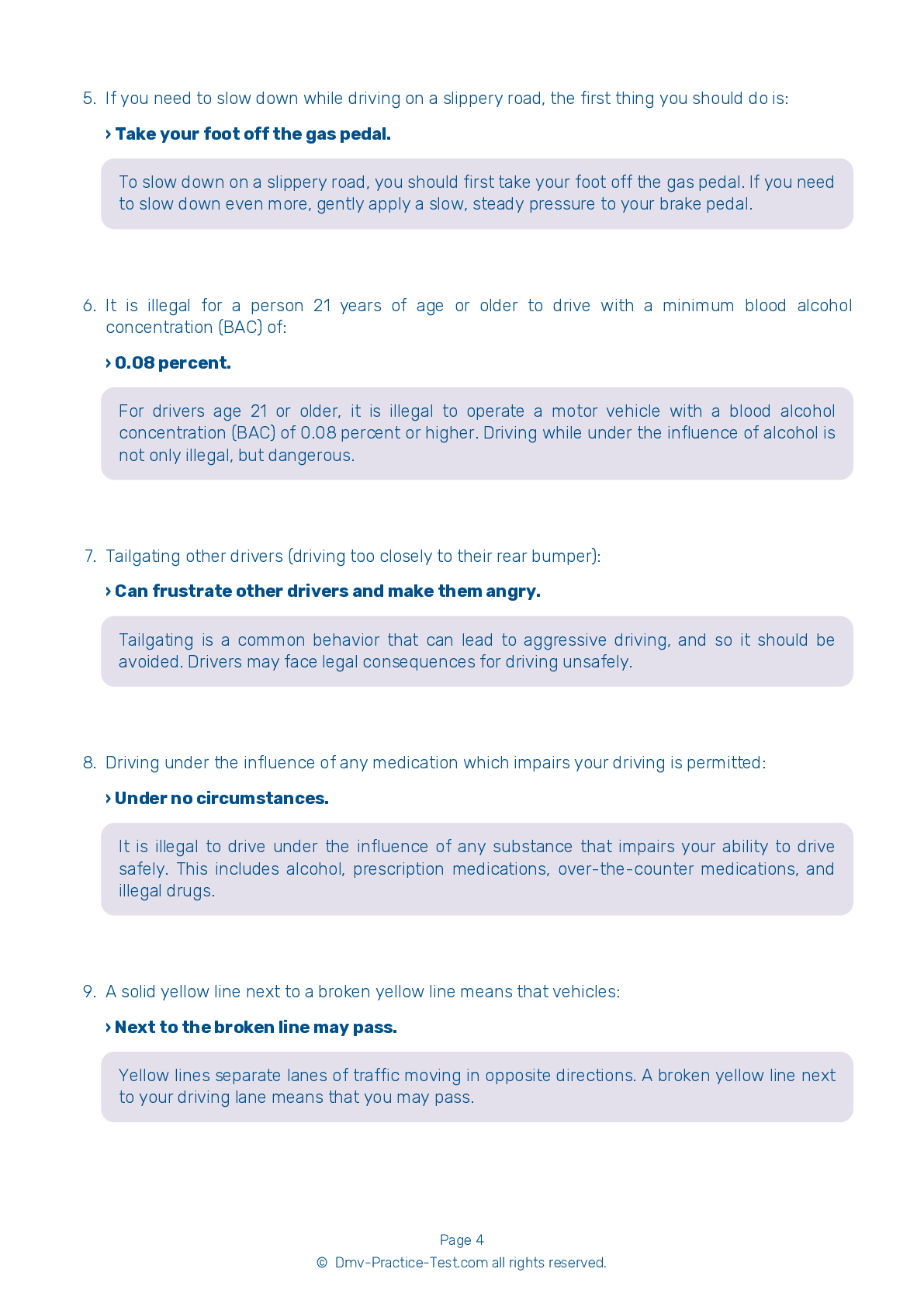FREE Vermont DMV Practice Test #20
The Vermont DMV practise examinations have been updated for January 2025. It includes questions based on the Vermont Driver Handbook's most significant traffic signals and legislation for 2025. Use actual questions that are very similar (often identical!) to the DMV driving permit test and driver's licence exam to study for the DMV driving permit test and driver's licence exam.
On the practise exam, each question gets a tip and explanation to help you remember the concepts. The written component of the official Vermont DMV test will include questions about traffic rules, traffic signs, and driving statutes, as well as knowledge from the Driver Handbook.
To obtain a passing grade, you must correctly answer 16 of the 20 questions. Use the practise exam provided by the Vermont Department of Motor Vehicles to help you prepare for your instruction permit or driver's licence.
The DMV exam is available in several languages.
Using any kind of testing assistance will result in an automatic fail, and the DMV may take additional action against your driver's licence, so stay away from it.
1 . You are involved in an accident. You should:
If involved in an accident, you should stop your vehicle immediately. If possible, move the vehicle out of the way of traffic. Call the nearest police agency and ask for an ambulance, if necessary. Do not move the injured unnecessarily, but attempt to stop severe bleeding with direct pressure. Wait for emergency vehicles to arrive.
2 . Which of the following about winter driving is not true?
You should not use cruise control on snow, in rain, in fog, or under similar hazardous conditions. Winter is the most difficult driving season and requires extra caution from drivers. It is important to consistently check your antifreeze and windshield washer fluid levels. Using snow tires can increase a vehicle's traction on the surface of slippery roads.
3 . If your wheels drop off the pavement and onto the shoulder of the road, you should:
If your wheels drop off the pavement and onto a low shoulder, you should reduce your speed without braking and very carefully turn back onto the pavement. Be aware of any nearby traffic when re-entering the road.
4 . Allowing a space cushion between your vehicle and its surroundings is important because it:
The only way to be sure you will have enough time to react to mistakes made by other drivers is to leave plenty of space between you and the vehicles around you.
5 . This road sign means:

This sign indicates that there is a sharp right turn ahead.
6 . Which of the following is true?
The law requires that your headlights be turned on a half hour after sunset until a half hour before sunrise. To help other drivers to see you, the best practice is to always drive with your low beam headlights on, even during the day. Always use your low beam headlights when driving in weather that decreases visibility.
2025 Vermont | Frequently Asked Questions
1. Not checking mirrors and blind spots before changing lanes or turning.
2. Speeding or driving too slowly for the conditions or posted speed limit.
3. Not coming to a complete stop at stop signs or red lights.
4. Incorrect signalling or not signalling at all.
5. Poor parking, especially parallel parking.
Remember, practice makes perfect, so take time to hone your skills.



